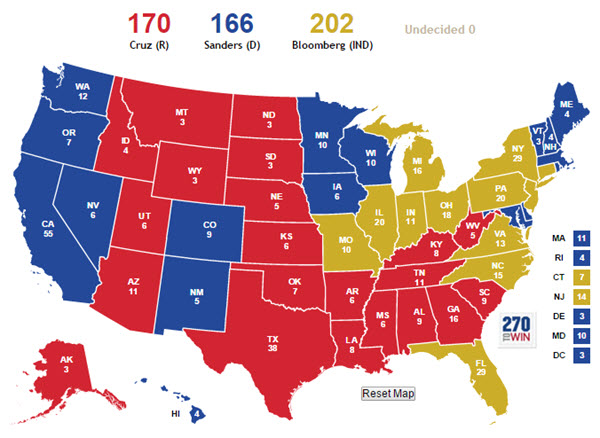Mayor Bloomberg and the Electoral Map
Former NYC Mayor Michael Bloomberg seems to have two paths to overcoming the major parties' monopoly on the electoral map. The more traditional path is to reach 270 electoral votes by conducting a middle-of-the road campaign that takes advantage of 2016 major party nominations well outside the mainstream.
The 2nd approach involves no candidate reaching 270 electoral votes. In that case, the president will be elected by the House of Representatives, with each state getting one vote to choose from the three candidates receiving the most electoral votes. Republicans control most state delegations, so the Democrat wouldn’t win. This leaves the Republican or an alternative. If a Republican nominee like Trump or Cruz were to be unappealing to the establishment, it is possible that Bloomberg could pull together a coalition of Democratic and moderate Republican state delegations to win.

Map just for illustrative purposes; this is an interactive map that lets people build independent/3rd party scenarios. If a viable independent joined the race, we would incorporate that into our main interactive electoral map which lets people save, share and/or embed their forecasts.
For either to work, however, the Mayor will need to prove electoral map viability from the early part of the campaign. Ross Perot won 19% of the popular vote in 1992. While that may have impacted the general election in terms of who won, Perot himself won no electoral votes and had no path to victory. From what we've read, Bloomberg won't enter the race if he doesn't think he can win.
270toWin is most well-known for letting users create and share election forecasts.

